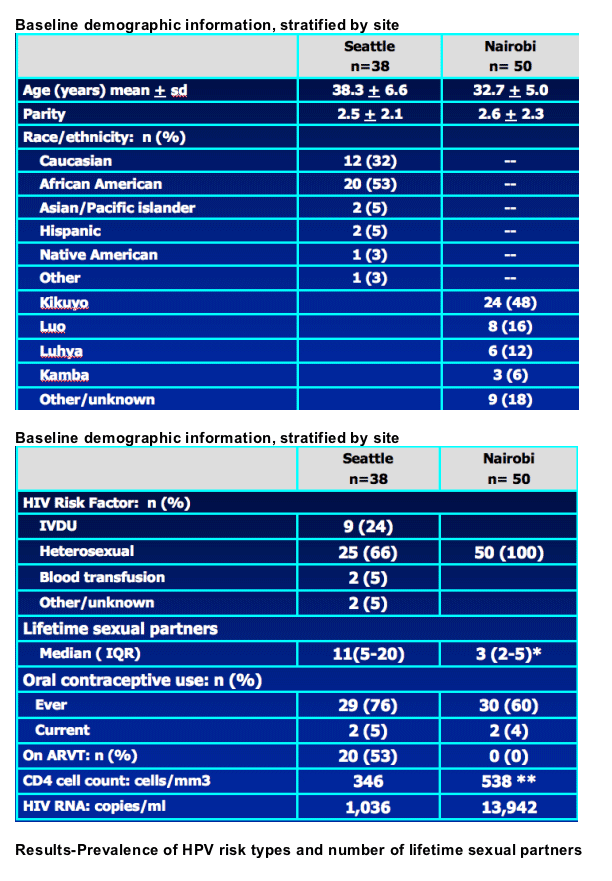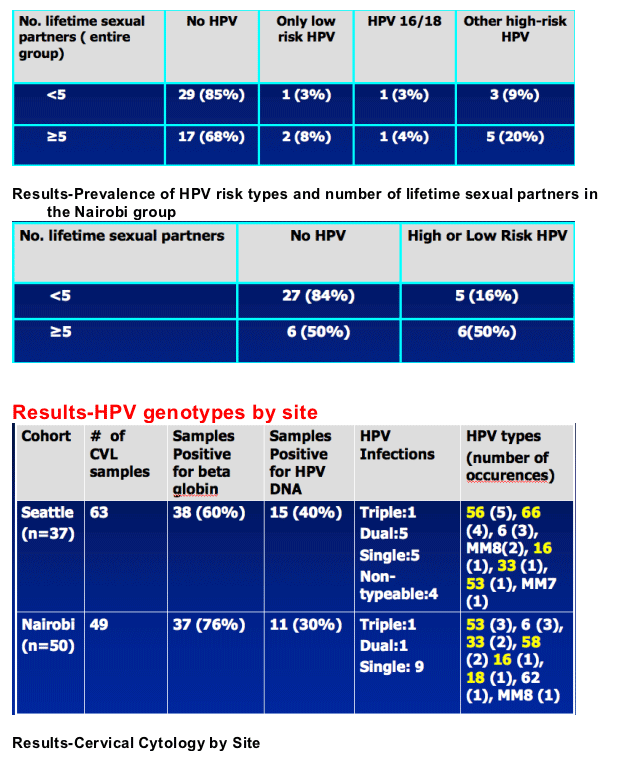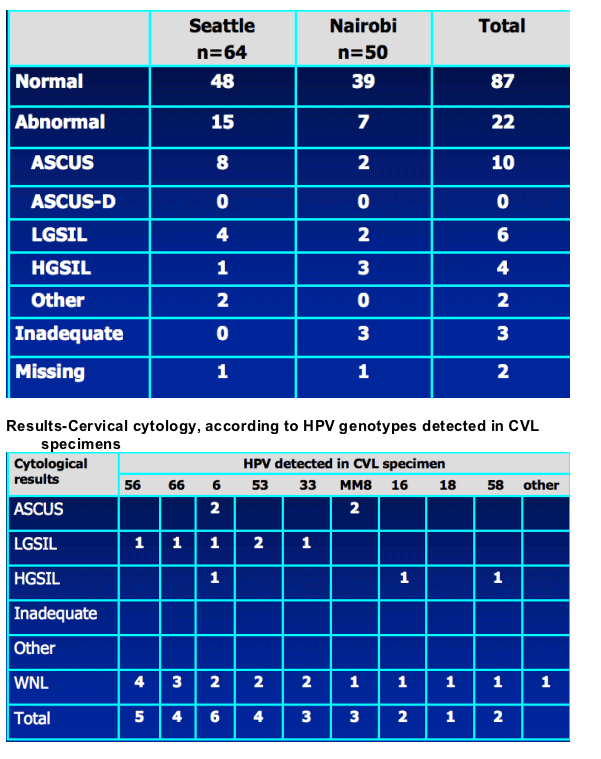 |
 |
 |
| |
Prevalence of Human Papillomavirus (HPV) Genotypes in HIV-1 Infected Women in Seattle, WA and Nairobi, Kenya
|
| |
| |
Results from the Women HIV Interdisciplinary Network (WHIN)
Amneris E. Luque*, Jane Hitti, Christina Mwachari, Christopher Lane, Susan Messing, Susan E. Cohn, Robert Rose and Robert Coombs
AUTHOR CONCLUSIONS
--Participants from Nairobi had significantly fewer sexual partners and had more commonly a single HPV type detected in CVL than those from Seattle.
--HIV-1 infected women in Seattle and Nairobi had geographically distinct set of HPV genotypes
--Patients in this study had a higher prevalence of high-risk HPV types other than 16 and 18.
--Women with more than one HPV type detected in CVL were 6.25 more likely to have an abnormal Pap smear than those with only one or no HPV detected
--Women were 7.52 times more likely to have an abnormal pap smear when they had high risk HPV present vs. none.
--Currently available HPV vaccines may not protect against other prevalent HPV types in these women.
Background-HPV Prevalence
-- HPV is the most common known sexually transmitted agent worldwide
-- At any given point in time 10% of women are positive for cervical HPV DNA (291 million women)
-- Certain HPV types are associated with squamous intraepithelial lesions. HPV 16 and 18 cause about 65% of the high grade lesions
Cervical Cancer in the Developing World
-- 83% of cases in developing world
-- #1 cancer cause of YLL in developing world
Background-HIV and HPV
When compared with HIV-uninfected women, HIV Infected women have:
-- higher rates of HPV infection
-- higher prevalence of infection with multiple types
of HPV
-- higher prevalence of oncogenic (high-risk) HPV
-- higher prevalence of cervical dysplasia
-- A different distribution of HPV genotypes
There appears to be a geographic variation in the distribution of HPV genotypes, but this has not been widely studied in HIV-infected women.
STUDY AIM
To assess the prevalence of HPV genotypes in two distinct populations of HIV-1 infected women
METHODS
HIV-1 infected women were enrolled in Seattle, WA and had evaluations at set intervals, over a 3 year period (2003-2006)
HIV-1 infected women with CD4+ cell count > 350 cells/mm3 were enrolled from Nairobi, Kenya and had similar evaluations as the Seattle participants at a single point in time
Baseline demographic information, stratified by site
Baseline demographic information, stratified by site
Results-Prevalence of HPV risk types and number of lifetime sexual partners
Results-Prevalence of HPV risk types and number of lifetime sexual partners in the Nairobi group



|
| |
|
 |
 |
|
|